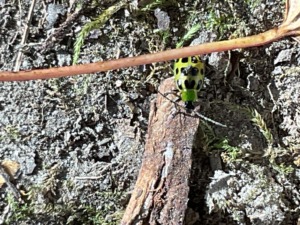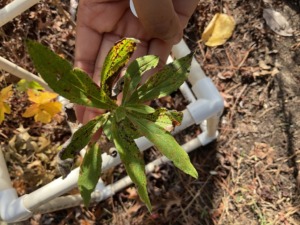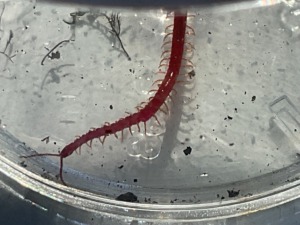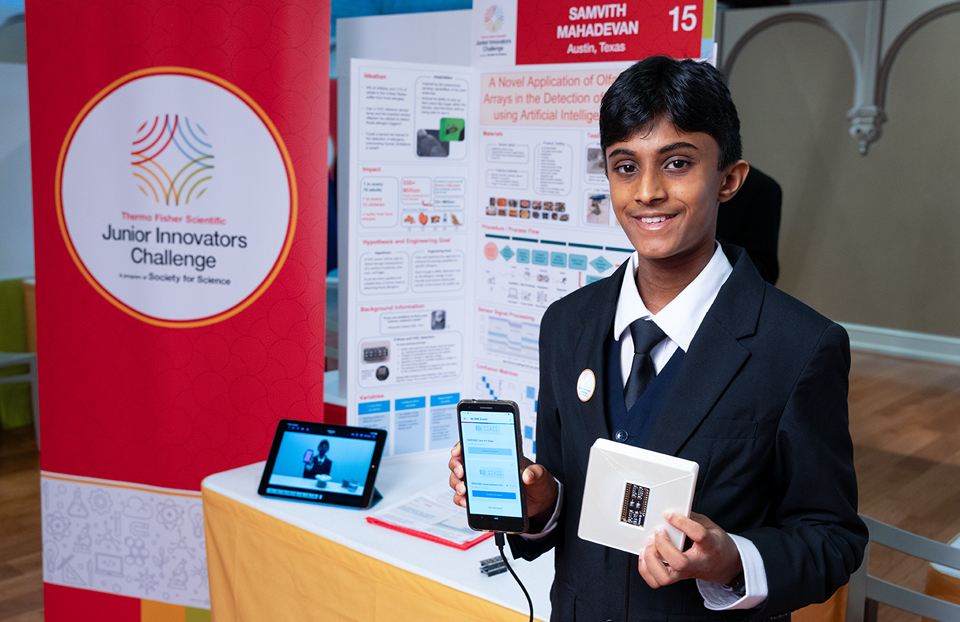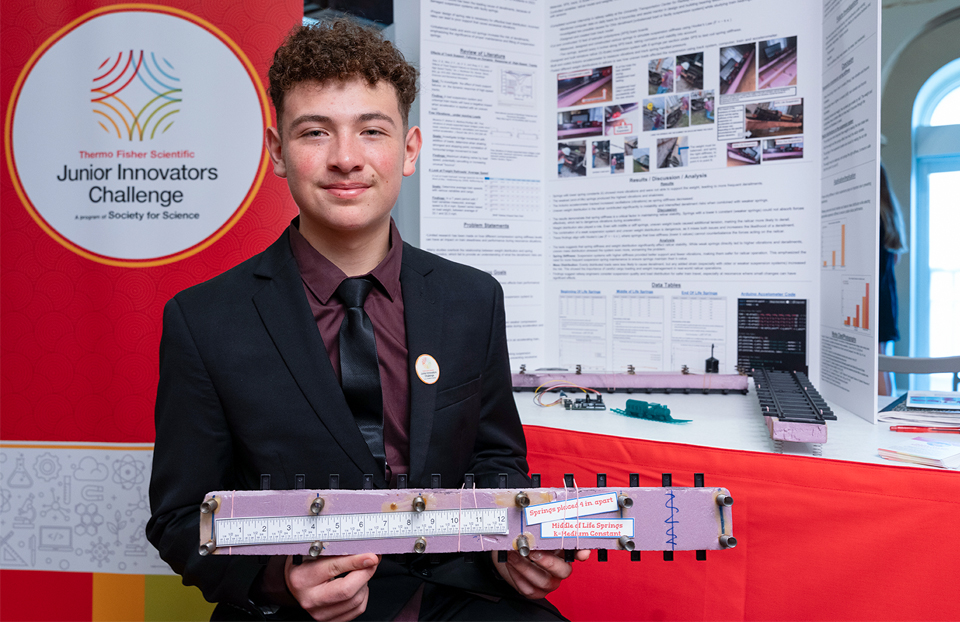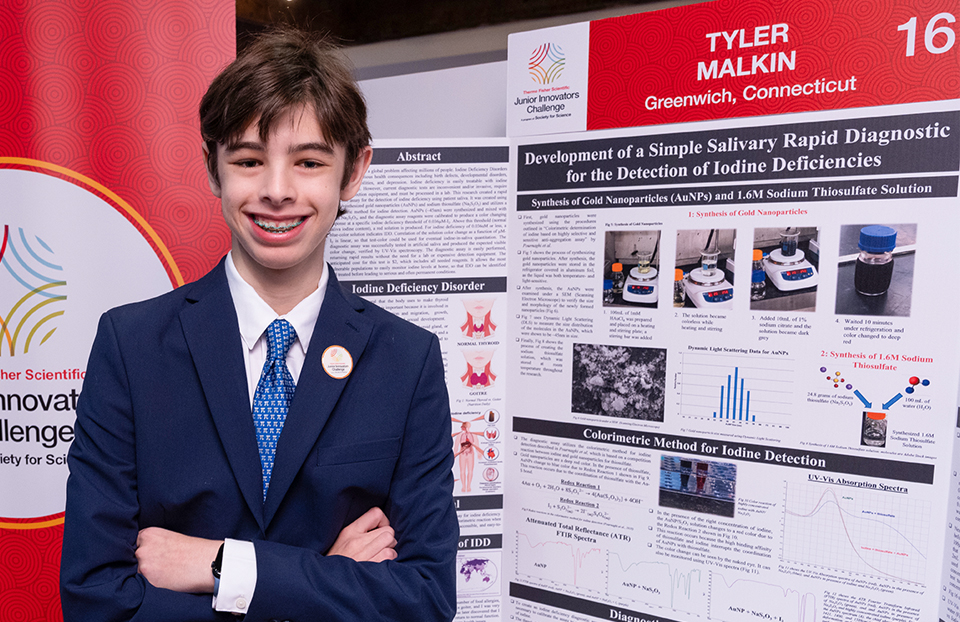Into the woods: Thermo Fisher JIC finalists take on their final challenge
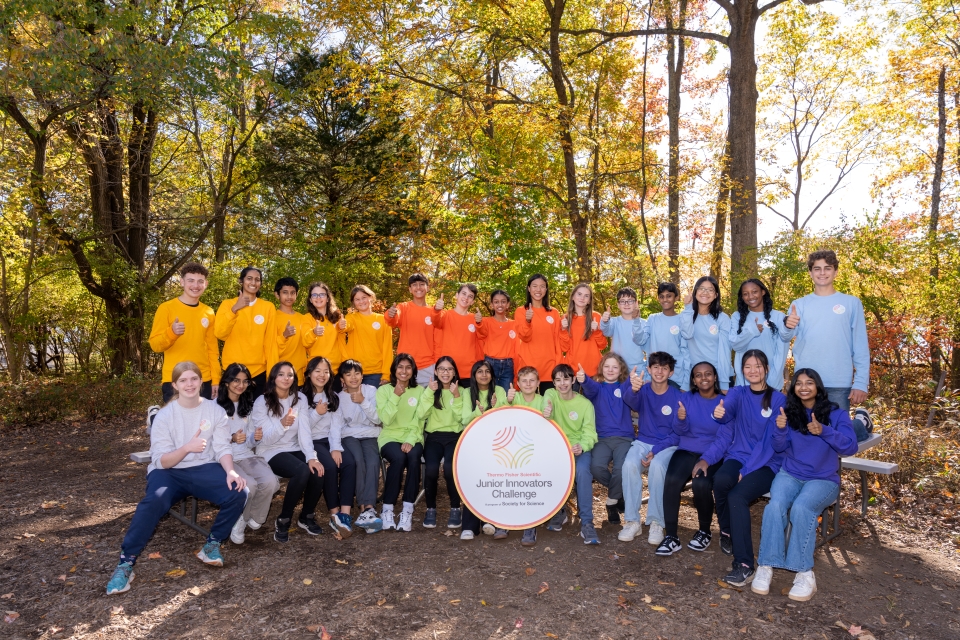
The 2024 Thermo Fisher Scientific Junior Innovators Challenge (Thermo Fisher JIC) brought together 30 of the nation’s brightest young scientists to Washington, D.C. for a week of friendly STEM competitions and team collaboration.
After putting their engineering, biology, and coding prowess to the test in challenges facilitated by JASON Learning, Pennsylvania Biomedical Research Society, and OpenWise Learning, and sharing their original research with the public at the Project Showcase (as well as the Virtual Project Showcase), the finalists headed east for their final challenge of the week at the Smithsonian Environmental Research Center (SERC).
Spanning 3,000 acres and 16 miles of scenic shoreline on the Chesapeake Bay, SERC is home to over 20 research laboratories specializing in fields ranging from carbon sequestration to ecosystems ecology to cataloging the “genetic barcode of life” of species across the Chesapeake. Against this fitting backdrop of real-world science, SERC’s Education Director Karen McDonald welcomed the finalists and introduced the day’s challenge, focused on biodiversity.
Karen began by providing a primer on the meaning of biodiversity and its importance to ecosystems of all types and sizes. She then outlined the day’s task: each of the six teams would take on the mantle of being expert ecologists in one of three distinct ecosystems —eastern woodlands, woodland’s edge, or freshwater pond. Though each setting was unique, the teams shared the goal of documenting as many species as they could identify in their assigned locale, while drawing broader conclusions about the area’s biodiversity.
As Karen explained, finalists wouldn’t merely be documenting species for the challenge. Equipped with iPads to record their observations, the finalists would upload photos of local wildlife to a database used by professional scientists working with the Maryland Biodiversity Project. Just like SERC’s scientists, the finalists’ fieldwork would be in the service of ongoing research initiatives.
The teams set off, traveling across SERC’s campus, into the woods, along the woodland edge and down to the water. As they went, the teams began to formulate ideas and strategies for documenting the biodiversity of their surroundings.
At the freshwater pond, the Silver Team could be seen with magnifying glasses carefully pipetting water samples, on the lookout for microorganisms. In addition to identifying the smallest of swimmers, they also happened upon some not-so-tiny inhabitants of the ecosystem, with one team member exclaiming after a notable finding, “That’s the BIGGEST bug I’ve ever seen!”
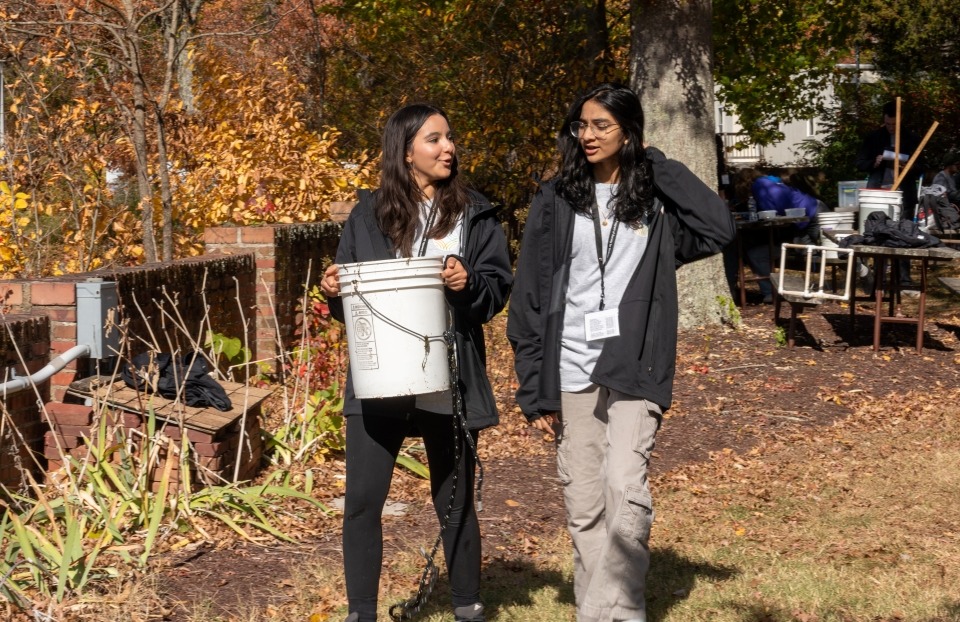
At the site on the woodland’s edge, the Green Team worked to identify a rare and unique organism whose identification briefly stumped even the experienced SERC team—but after some quick cross-referencing with the iNaturalist tool, they positively identified the little crawler as a hedgehog slug.
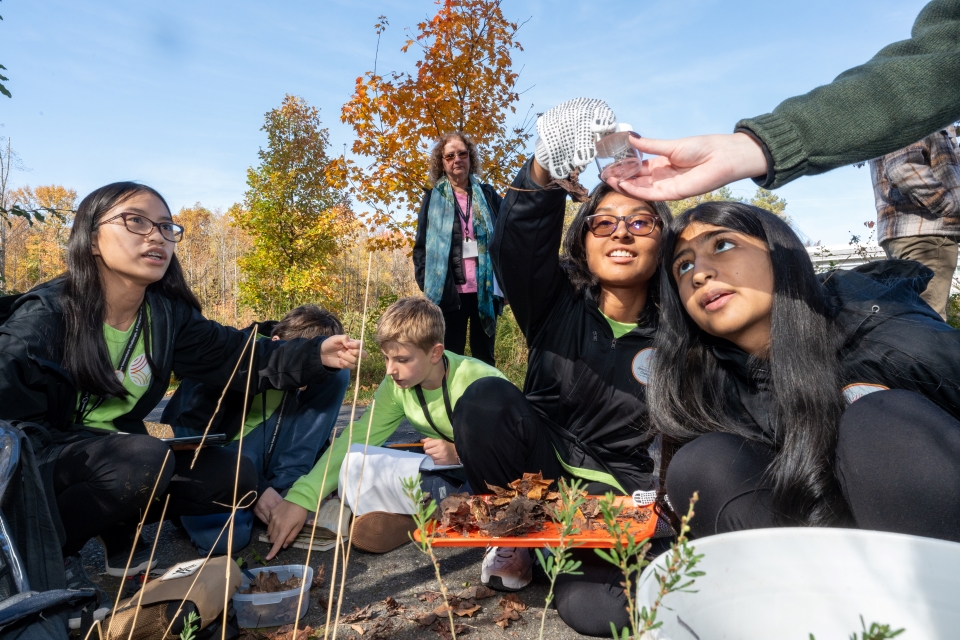
The Orange Team conducted their investigations at the edge of the woods, where they found an abundance of life, sometimes startlingly so, like when they uncovered a large group of scuttling spiders. Rather than retreat, the team zoomed in for a closer look, working to identify the arachnids by their distinctive spotted patterns.
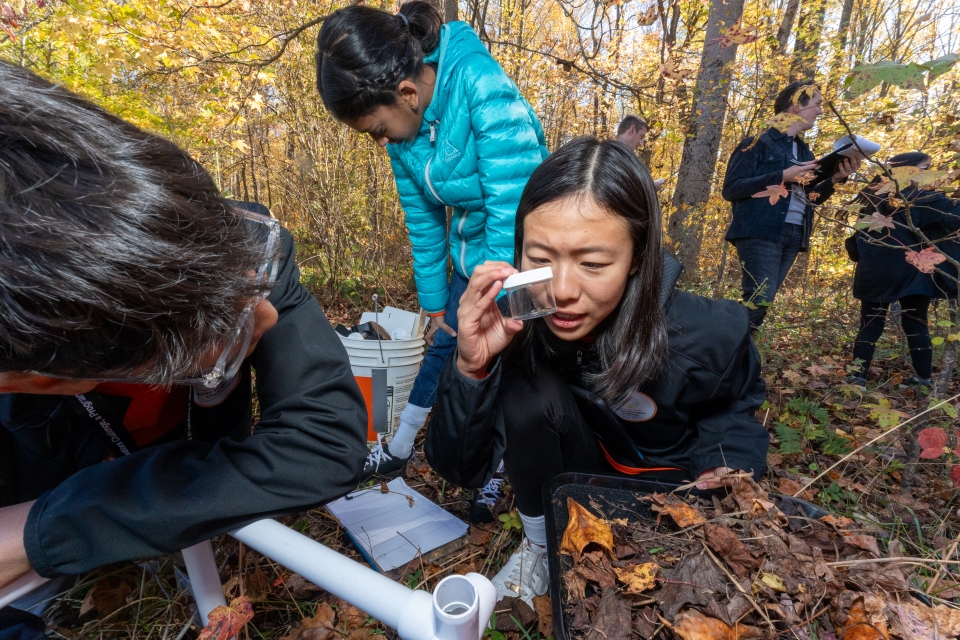
In the dense thicket of the eastern woodland site, the Blue Team carefully strategized to eliminate potential biases in their observations. After pinpointing an area, they worked meticulously—not only to document the biodiversity of the plot, but also to minimize any disruption on the homes of the organisms they hoped to identify.
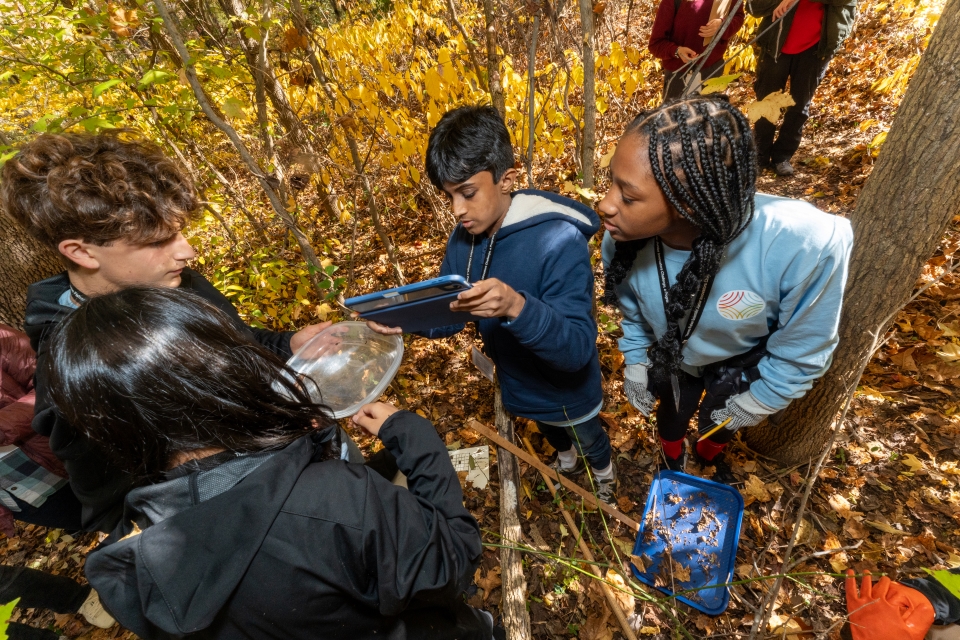
On their search for biodiversity, the Gold Team was very deliberate in its efforts to capture the highest quality images they could, slow and steady—except when they had to act quickly to document a wasp that buzzed through their area for a moment.
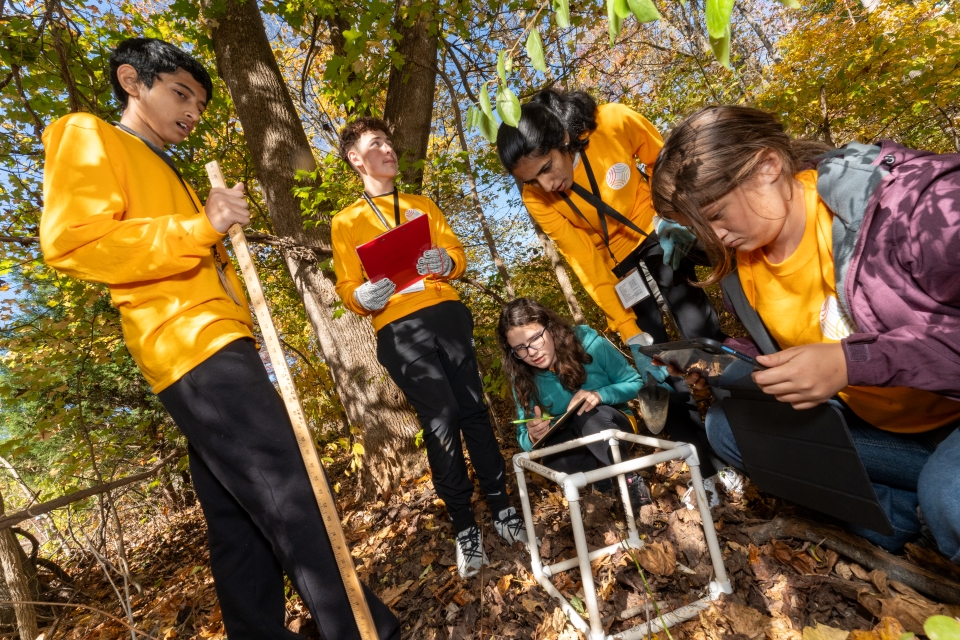
In addition to exploring biodiversity through the challenge, the finalists had the opportunity to experience the Chesapeake’s marine life up close through a seining activity—a fishing method that involves gently dragging a large net through water. Wading into the bay in pairs, the finalists tried their hand at seining and carefully transferred the organisms they found into categorized bins labeled “swimmers, hoppers, floaters and crawlers.”
The Purple Team showed a particular aptitude for the seining activity, collecting an impressive collection of shimmering swimmers, which they identified as silverside fish—in addition to an array of other fish, grass shrimp and even a few jellyfish.
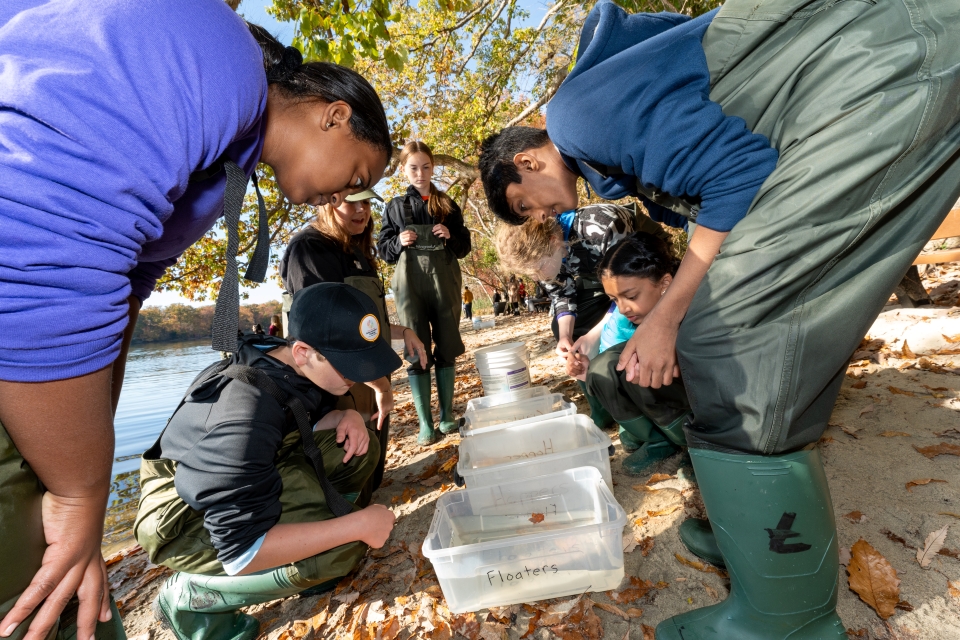
After completing their work in the field and presenting their observations and analysis to the judges, Karen congratulated the finalists for doing a “really wonderful job.” She also informed the group that, over the course of the challenge, the finalists logged nearly 100 observations, while cataloging at least 27 different species—each of which would be documented for future reference by scientists studying the Chesapeake region.
